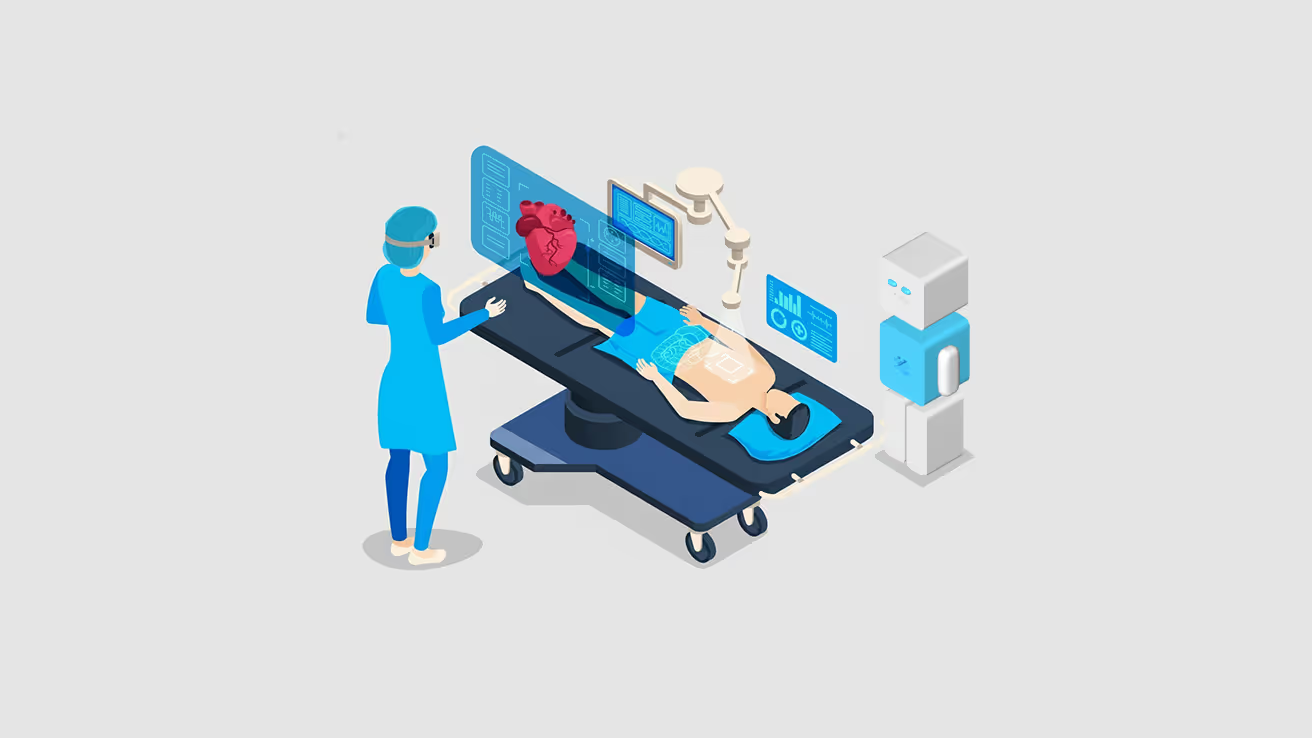
The convergence of virtual reality, augmented reality, and artificial intelligence is fundamentally transforming how we prepare professionals for high-stakes, high-consequence scenarios. From operating rooms to battlefields, simulation training has evolved from rudimentary exercises to hyper-realistic, AI-powered experiences that compress years of experience into months of focused training.
The Medical Simulation Market Boom
The medical simulation market is experiencing explosive growth, valued at $1.26 billion in 2025 and projected to reach $6.23 billion by 2034, a compound annual growth rate of 16.3%. This isn't just about market size; it reflects a fundamental shift in how medical professionals are trained.
Traditional medical training followed a "see one, do one, teach one" apprenticeship model. Students observed procedures, then performed them on patients under supervision, then taught others. This approach worked, but it placed real patients at risk during the learning process and limited training opportunities to actual cases encountered during residency.
Modern simulation training changes this equation completely. High-fidelity VR and AR systems enable medical students and practicing physicians to perform thousands of procedures in realistic virtual environments before ever touching a real patient. AI integration provides real-time feedback, adapting scenarios to each trainee's skill level and focusing on areas where they need improvement.
What Modern Medical Simulation Offers
Today's medical simulation platforms provide:
Perhaps most importantly, simulation training enables practice without consequences. Medical professionals can make mistakes, learn from them, and try again, without harming patients. This accelerates learning and builds confidence in a way that traditional training cannot match.
Remote and Distributed Learning
Web-based simulation platforms have exploded in adoption, enabling medical professionals to train from anywhere. This is particularly valuable for rural or underserved areas where access to advanced training programs is limited. A physician in a remote clinic can now access the same high-fidelity simulation training as someone at a major academic medical center.
The COVID-19 pandemic accelerated this trend dramatically, proving that effective medical education can happen without physical proximity. As platforms mature and VR hardware becomes more affordable, expect remote simulation training to become the standard, not the exception.
Combat Simulation: Preparing for the Unthinkable
On a parallel track, military organizations have embraced VR, AR, and Mixed Reality as critical components of tactical training. Combat simulation training in 2025 has evolved to create ultra-realistic environments that replicate battlefield conditions with extraordinary fidelity.
Modern military simulations incorporate:
Training Without Risk
The value proposition is clear: soldiers can experience combat scenarios repeatedly, learning from mistakes and developing tactical intuition, all without any actual risk to life or resources. A platoon can practice clearing a building dozens of times, experimenting with different approaches, before ever encountering a real-world situation.
This isn't just about individual skills. Modern combat simulation enables large-scale exercises involving hundreds of participants, combined arms operations, joint force coordination, command and control, in virtual environments that would be prohibitively expensive or logistically impossible to replicate in physical training exercises.
The AI Advantage
What sets current-generation simulation apart from earlier versions is the integration of artificial intelligence. AI serves multiple roles:
Cross-Domain Applications
Interestingly, technologies developed for military simulation are finding applications in civilian domains and vice versa. Emergency response training uses similar platforms to prepare first responders for disasters. Law enforcement agencies use VR simulation for de-escalation training. Industrial safety training employs the same technologies to prepare workers for hazardous situations.
The common thread is clear: wherever the cost of on-the-job training is high, whether measured in lives, equipment, or opportunity, simulation training provides a more effective, safer, and more scalable alternative.
The Future of Professional Development
As these technologies mature and become more affordable, simulation training will expand beyond high-stakes professions. We're already seeing VR/AR training for roles ranging from customer service to complex industrial maintenance. The ability to practice, fail, learn, and improve in a risk-free environment has universal value.
The market growth we're seeing isn't just about technology adoption, it's about a fundamental reimagining of how humans develop expertise. The professionals of tomorrow will arrive at their first day on the job with thousands of hours of realistic experience already logged. That's not just better training; it's a transformation in how we prepare people for the challenges they'll face.